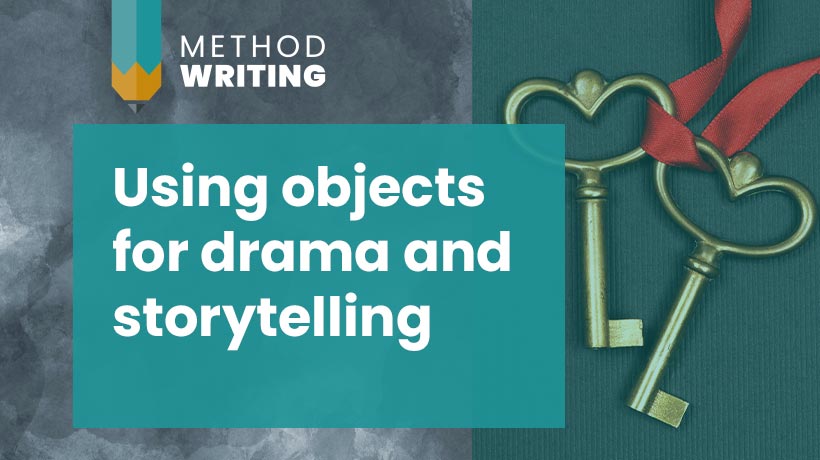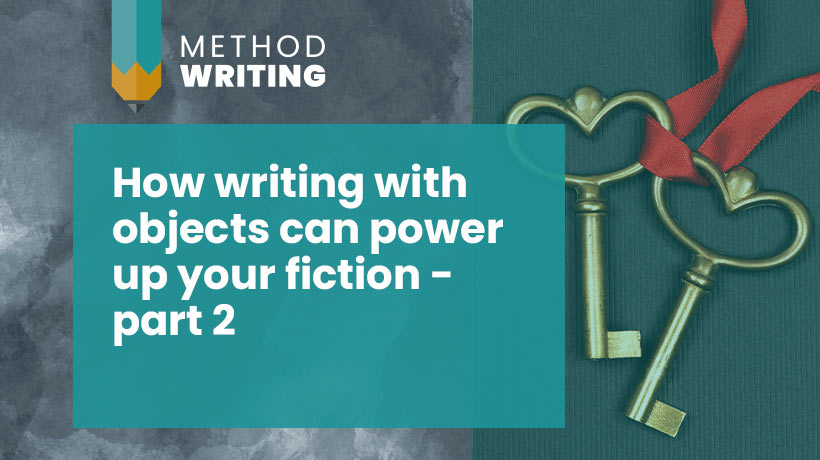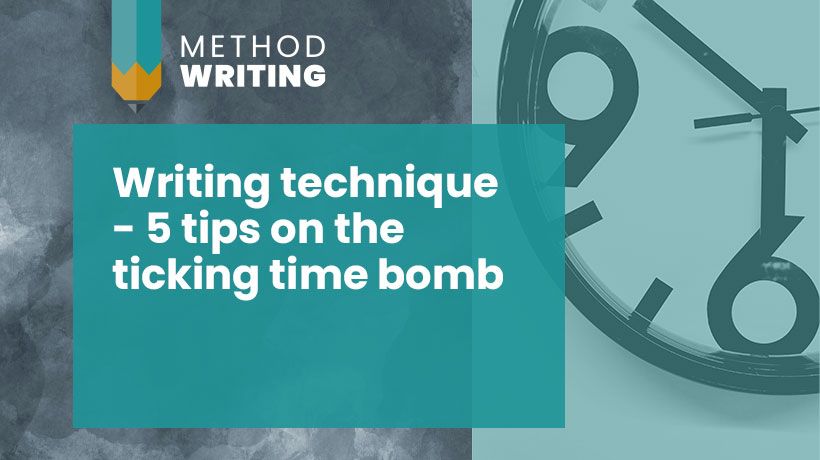How writing with objects can power up your fiction 2
Why is writing with objects so powerful in creative writing? Physical Objects Part 1 looks at how you can use verbs with objects, to brainstorm story and character ideas. Part 2 goes deeper, and describes different kinds and scales of objects, and ways to explore their potential.
If you’re interested in this writing topic, see my creative writing technique book, Dramatic Techniques for Creative Writers.
Writing with Objects – IMMOVABLE (tree, boulder, skip, house)
Objects come in different sizes and scales, of course. And some are so large that they’re almost part of the scenery. Sometimes, they can dominate the surroundings and impose certain kinds of movement on the characters.
People’s actions in connection with these objects are different than with smaller ones. Try brainstorming action verbs. Look for contrasts – for example: above/below, inside/outside, deface/clean, build/destroy, for example.
Now, consider what people usually do with this object? As well as typical or normal actions, look further for unusual or transgressive actions.
For example, consider whether any of these objects have territorial meaning. Maybe they come with taboos or boundaries? Say, a gate that can’t be opened. Or a tree with special significance?
Objects like these can provide a great opportunity for dramatic action. What happens if your characters breach these taboos?
Make a list of actions, and then arrange them in different orders, to see the effect. Use index cards or sticky notes, if you like.
Do they have story potential? Does the story develop or escalate? Does the object transfer or transform?
Imagine the sequences as silent scenes. What do you see? Does something happen to the object? If not, maybe it doesn’t have a significant enough role. Maybe it can even be cut.
Example: Avatar (2009), directed by James Cameron.
Writing with Objects – MOVABLE (table, car, throne)
At this scale, objects are big enough to act as obstacles, to be clambered on, to be shifted.
They may have literal or symbolic value, or both. They may demand respect, and not always get it.
What do these objects offer visually for your story or script? Imagine them from unusual angles – under a car or table, standing behind a throne. What does that do to the dynamics and status of your characters?
Imagine these objects transformed in different ways – painted, upturned, covered, taken hostage. What characters and stories come to mind? What’s the visual impact?
Try before/after scenarios as bookends for a scene arc – cleaning a muddy car, scratching a valuable table.
Now, try the effect of moving these objects to a different, contrasting place. How does their meaning and impact change?
Example: The Piano (1993), directed by Jane Campion.
Writing with Objects – PORTABLE (guitar, vase, fishing rod)
Objects that are easy to carry around are likely to be personal rather than social possessions. What’s more, they may come with a strong sense of ownership and pride, even identity.
If your characters have objects like this, they can be transferred in different ways. They can be exchanged, yielded, stolen or hidden. And these transfers can be willing or unwilling.
They can also be invested with high value, whether financial or emotional. As a result, their transfer between characters can be fraught with meaning.
Try imagining an object of this kind for your character. Imagine it old, then imagine it new. What different stories are suggested?
How can you make the object important? Raise the stakes.
Imagine the object gone. What does this mean for the character?
Are there any limits to this object’s portability? Are there situations where it would be very unlikely to appear? Aim for maximum contrast.
Example: El Mariachi (1992), directed by Robert Rodriguez.
Look out for immovable, movable and portable objects with a central role in film or fiction. Post some examples down below!

Read more articles on dramatization and writing with objects:
How writing with objects can power up your fiction
How to use objects in your fiction writing
Writing technique – secrets of dramatic action


